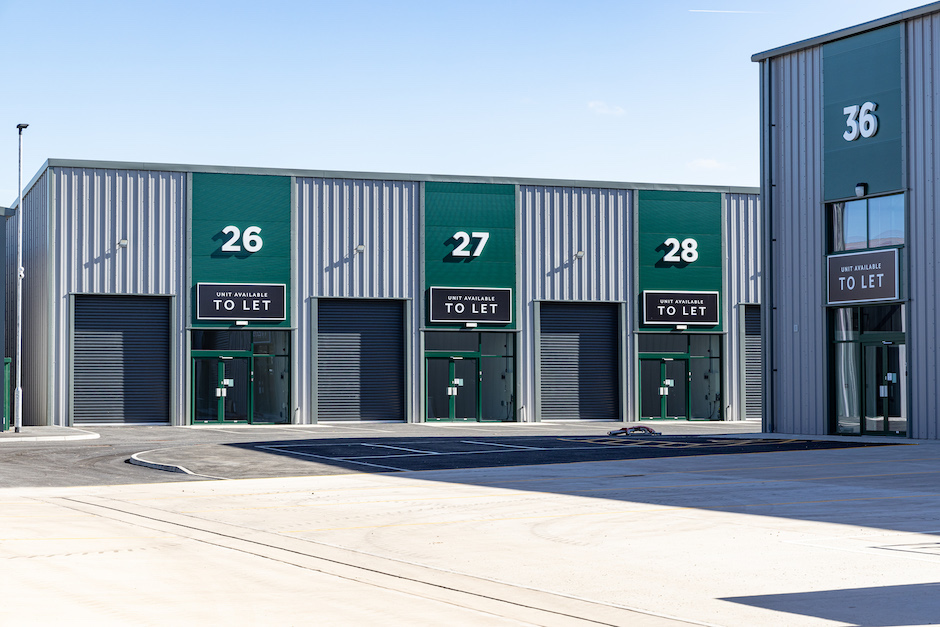The UK industrial and logistics sector has experienced an interesting year. Q1 2022 was close to an all-time high and the sector made historic gains following the worst of the Covid-19 pandemic.
A range of factors including the cost of living crisis, the war in Ukraine and a rise in the portion of shopping done on high streets led to tougher times in the sector. Reports from Savills showed that investment in industrial and logistics assets was just £890m in Q4 2022, substantially lower than the three-year average for that quarter.
However, it is not fair to say that it was all bad news for the sector. Any falls must be viewed in the context that they came from an unusually high baseline established at the start of last year.
Kevin Mofid, head of EMEA logistics research at Savills, notes that: “While the second half of 2022 was slower in terms of occupier demand than the market had become accustomed to during the pandemic period, we still saw 48m sqft of take-up, the third-highest year ever recorded.”
He went on to say that Savills analysis showed an upturn in Q1 2023 and broad increases in rents across industrial and logistics property in 2024 and 2025.
A buoyant Q2 2023 revealed the major driving force behind the projected future rental growth in the industrial and logistics sector is the lack of supply – especially in the Grade A market.
Data shows that demand remains above the 10-year average in the sector despite economic caution still being a factor. As of July 2023, take-up has returned to pre-Covid levels with 12.5m sqft being leased over the first half of the year. Savills also notes that this take-up is expected to increase even further.
To meet this demand, CBRE estimates that 34.5m sqft of new space is under construction as the of Q3 2023. This indicates a resilient market that should continue to flourish over the rest of the year and beyond as economic activity grows again.
Third-party logistics providers, manufacturers and other occupiers are driving this demand, and that is likely to push rents up in future even as more property is completed by developers.
When considering what’s next for the UK industrial and logistics sector in this market, it is worth considering what occupiers want most and how that will affect future demand.
As always, Grade A facilities in locations with the best transport links will be more desirable than ever, particularly for the two types of occupiers mentioned previously which both rely on connectivity above almost everything else.
With regard to the facilities themselves, wider logistics trends prioritising smarter technology and decision making based on better supply chain data will give facilities which incorporate newer technology an edge in the future market. In a more competitive economy, the higher rents will go to industrial and logistics properties which can save occupiers money by reducing transport costs and protecting their margins – a vital advantage in a competitive economy.
Likewise, a look ahead to the future of the sector also must take environmental factors into account. Firstly, ESG-compliant properties are likely to see higher rental growth than ones which do not help occupiers meet their sustainability obligations. Companies which are ESG compliant are less exposed to penalties and are more future-proofed. Industrial and logistics property which can contribute positively to that will be more attractive and command higher rents, with the link between BREEAM-certified, EPC A-rated buildings and higher rental yields being well established.
Secondly, properties which offer a superior working environment are also likely to see increased popularity among potential occupiers. In a competitive labour market, businesses will prioritise spaces which provide enhanced health and safety measures, wellness perks and other facilities which assist with staff retention.
The UK industrial and logistics property sector faces challenges over the second half of 2023, 2024 and further ahead into the future, however it remains robust and demand is expected to keep growing. Properties which can offer business advantages in key areas such as connectivity and sustainability will be the most popular for businesses of all types that seek a competitive advantage – either by getting to the customers more easily, by making the most of the ESG opportunity, or both.
For businesses, this is the perfect time to secure a Grade A industrial and logistics space that will help to future-proof your company and provide you with the tools to meet your goals.
With projected rental growth in 2024 and 2025, finding your new industrial space now is a savvy move that will pay off in the future.
Want to learn more about our industrial and logistics properties? Click here today to browse our outstanding properties and get in touch with the team.

